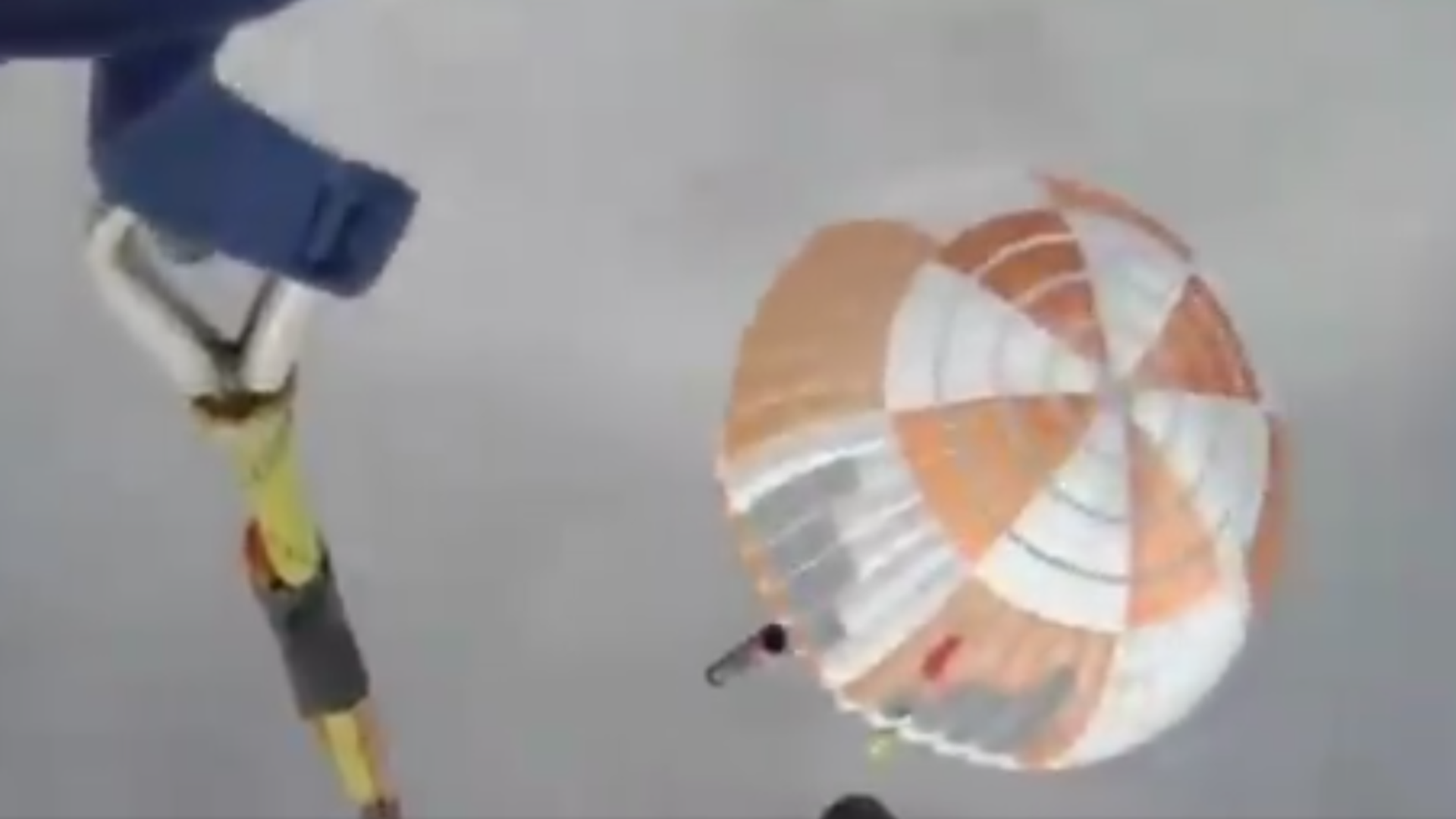Watch as Rocket Lab Performs Mid-Air Chopper Capture of Electron Rocket Booster
04:11 GMT 03.05.2022 (Updated: 16:57 GMT 12.04.2023)
Subscribe
Rocket Lab, a 25-year-old space company, intends to market a line of reusable rocket boosters that use the atmosphere to slow them down until a parachute is deployed, making the boosters retrievable by helicopter. The recovered booster will then be used for a future orbital mission.
Rocket Lab achieved a primary goal in its most recent ‘There and Back Again’ mission, which resulted in the deployment of 34 small satellites into low Earth orbit for a number of customers, such as Aurora Propulsion Technologies, E-Space, Spaceflight Inc., Astrix Astronautics, and Unseenlabs.
The California-based company’s launch occurred around 6:49 p.m. EDT (22:49 GMT) at Launch Complex 1A, on the Māhia Peninsula in New Zealand. However, the booster ultimately ended up in the Pacific Ocean.
“After the catch the helicopter pilot noticed different load characteristics than we’ve experienced in testing ... at his discretion, the pilot offloaded the [rocket booster] for a successful splashdown where it has been recovered by our [ship] for transport back to our factory,” said Rocket Lab senior communications adviser Murielle Baker during the webcast.
Rocket Lab confirms staging. The Electron rocket’s first stage has separated to begin its descent back to Earth, where a helicopter will attempt to catch its parachute in mid-air.
— Spaceflight Now (@SpaceflightNow) May 2, 2022
The second stage is firing into orbit with 34 small payloads. https://t.co/a8688Hvd0L pic.twitter.com/a61WzUCAjv
Baker noted that the Electron booster remains in “great condition,” and will be assessed in detail once it returns to the Rocket Lab factory.
“This is a monumental step forward in our program to make electron a reusable launch vehicle,” Baker added.
Rocket Lab confirms the recovery helicopter caught the Electron booster over the Pacific Ocean, about 15 minutes after launching from from New Zealand — a major step in the company’s rocket reuse efforts. https://t.co/a8688Hvd0L pic.twitter.com/lMiAJ9gGJf
— Spaceflight Now (@SpaceflightNow) May 2, 2022
The vehicle is primarily made of carbon fiber composite and measures 59 feet (18 meters), and approximately 4 feet (1.2 meters) wide. The vehicle uses technology dubbed an “aero thermal decelerator” to slow the booster through its re-entry to Earth.
“I think anybody who’s not developing a reusable launch vehicle at this point in time is developing a dead-end product because it’s just so obvious that this is a fundamental approach that has to be baked in from day one,” said Rocket Lab CEO Peter Beck back in November
As of this article’s publication, Elon Musk’s SpaceX is the only company to successfully refurbish a recovered booster.

